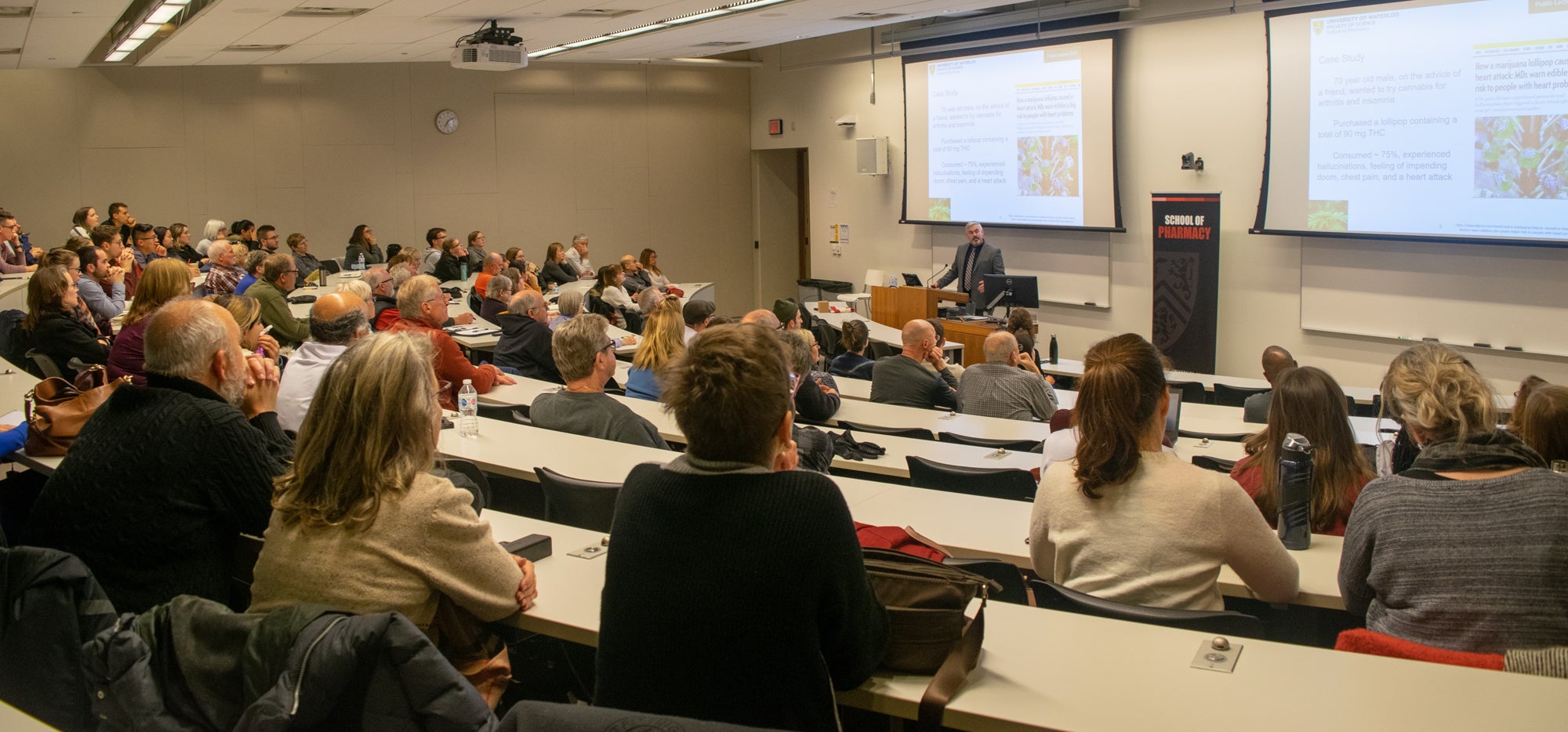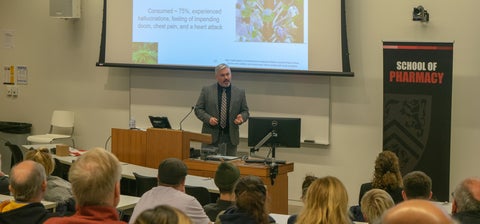
Get the facts on cannabis edibles
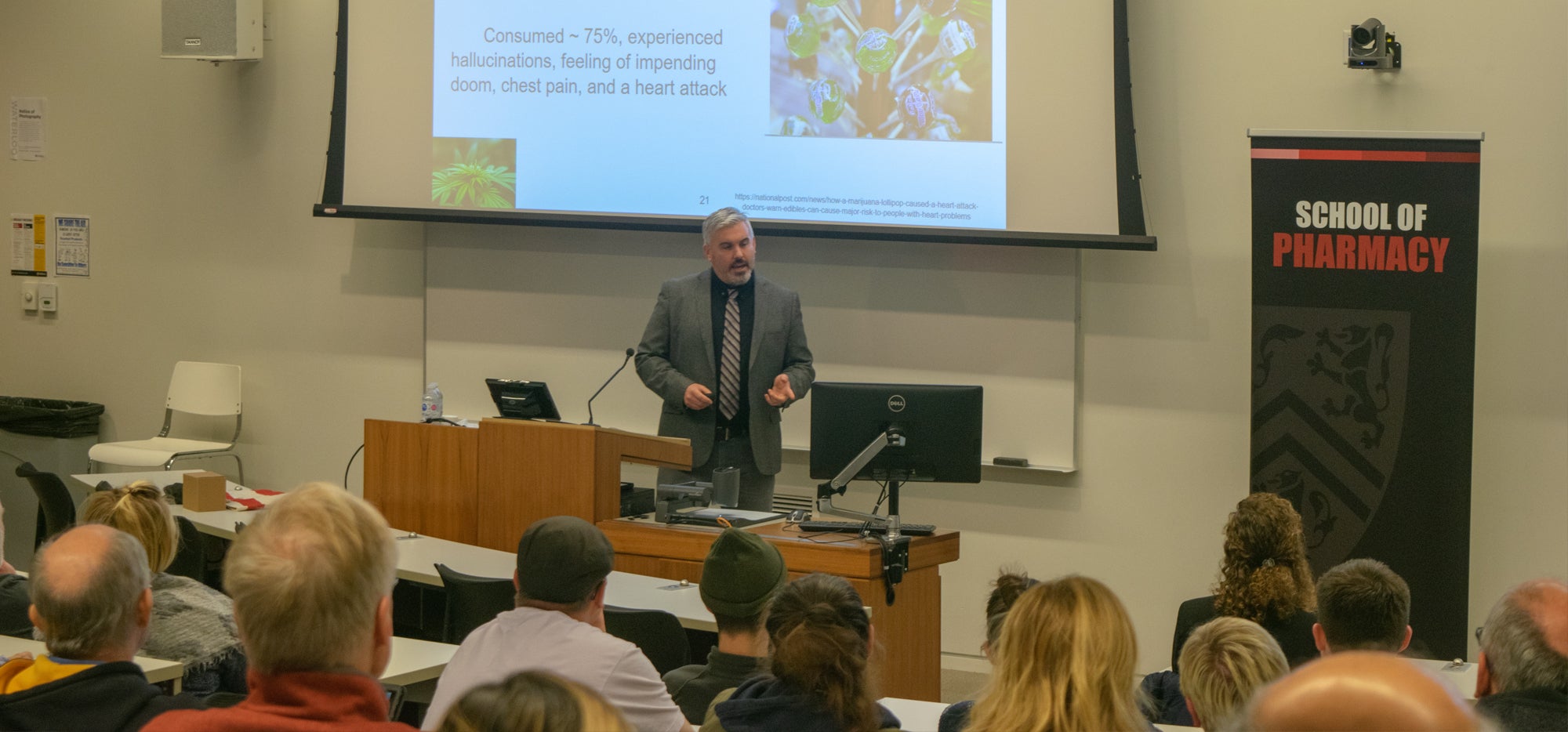
Missed last week’s public lecture, Let’s Talk Edibles? Here’s a recap of facts from speakers Prof. Michael Beazely, School of Pharmacy, and Research Scientist Samantha Goodman, School of Public Health and Health Systems (SPHHS).
Is edible cannabis legal in Canada?
- Edible cannabis has been legal in Canada as of October 17, 2019, though products are not expected to be available at provincial retailers such as the Ontario Cannabis Store until at least mid-December
- Regulations require that products will be limited to 10 milligrams (mg) or less of THC per package
How is eating/ingesting cannabis different from smoking it?
- Inhaled cannabis starts working within 10 minutes and effects typically last 2-4 hours
- Edible cannabis starts working after about 30-60 min and effects typically last 4-6 hours
What should I watch out for with edible cannabis?
- Because edible cannabis takes longer to kick in than inhaled cannabis, it’s important you wait and see how you feel before deciding if you want to take more
What should I watch out for if I’ve never used cannabis before?
- If you’ve never used edible cannabis before, Health Canada recommends a starting dose of 2.5 mg THC; start there and see how you respond before considering eating more
- Fractions are important to calculate doses! For example, to get a 2.5 mg dose of THC, you have to divide a 10 mg cookie into 4 pieces. Be sure to check the total dose of your cannabis edible product and do the math to ensure you’re getting the dose you want.
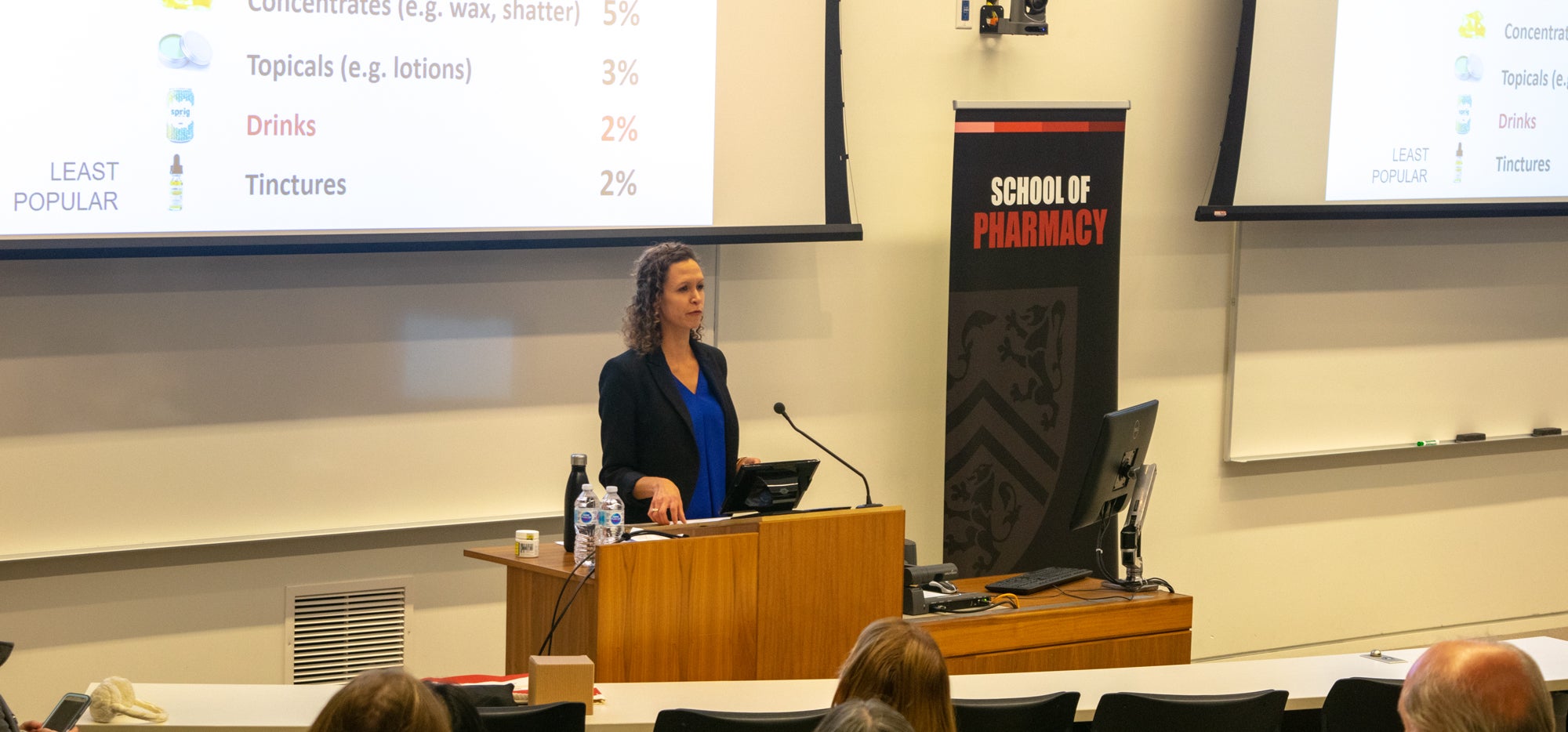
How common are negative side effects of cannabis use? Of edible cannabis use?
- According to a survey of over 10,000 Canadians conducted by Goodman (above) and Prof. David Hammond’s team at the SPHHS, about 1.6% of Canadians had experienced a negative side effect from using cannabis in the year prior to legalization
- Of that 1.6%, about 27% of respondents had experienced a negative side effect when using edibles (compared to 53% who experienced negative effects after using dried cannabis)
How often do Canadians accidentally consume cannabis?
- Of the over 10,000 respondents, 2% reported that someone in their household (including pets!) had accidentally consumed cannabis
- In those cases, the following graph shows who did the accidental consuming:
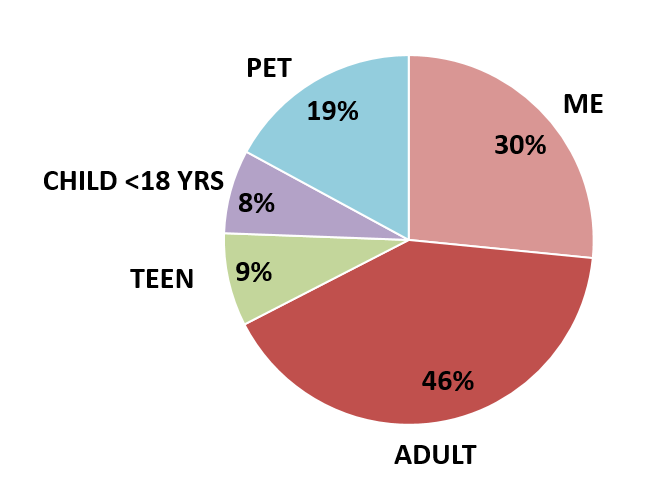
A pie chart showing Adult 46%, Me 30%, Teen 9%, Children < 18 years 8%, Pet 19%.
What should I do in the case of accidental consumption or a bad side effect?
- In many cases, the discomfort associated with consuming too high a dose or an accidental dose will pass quickly. Often, keeping the person in a comfortable environment at home will help them more than taking them to a busy emergency room.
- If the person is experiencing significant discomfort, go to the emergency room
- If a child or an elderly person has accidentally consumed or is experiencing negative effects, go to an emergency room
How can I prevent accidental consumption?
- Don’t store edible cannabis products in the home
- If you are storing them in the home, be sure to put them in a secure or locked location
- Be sure all cannabis products are clearly labelled
- Avoid buying types of products that may be enticing to children (ex: cookies, brownies, gummies)
Let’s Talk Pot, the Facts on Edible Cannabis was part of an annual public lecture series hosted by the School of Pharmacy. For more information on edible cannabis in Canada, see the Health Canada website.
